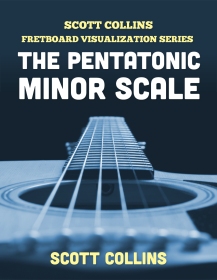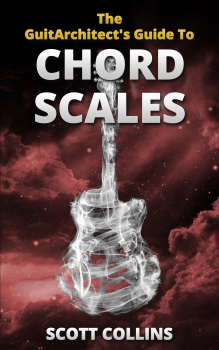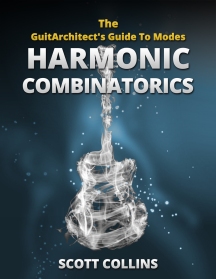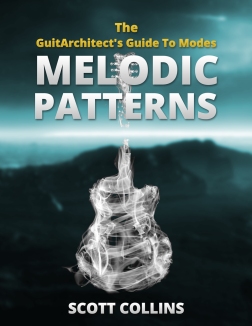I currently have eight books for sale.
(Just click on the book to link to more information or click the description below it for the full description.)
.
.
I have six print editions/pdf books available here:
.
Symmetrical Twelve Tone Patterns is a 284 page book with a large reference component and about 100 pages of extensive notated examples and instruction.
Eschewing a reliance on academic jargon, “Symmetrical Twelve-Tone Patterns” investigates the material in an intuitive and accessible way that will help players access new sounds in their playing.
Symmetrical Twelve-Tone Patterns book description
Pentatonic Visualization book description
Harmonic Combinatorics book description
Positional Exploration book description
With this information, you will be able to create a near infinite number of unique riffs and melodic phrases, which you can use individually or combined to compose or improvise your own music.
The GuitArchitect’s Guide to Modes: Melodic Patterns is an invaluable compositional and improvisational resource for both guitarists and bassists.
Melodic Patterns book description
.
and have two Kindle titles available here:
.
 “Selling It Versus Selling Out” is an alternative approach to the dusty music business books you’ve seen before.
“Selling It Versus Selling Out” is an alternative approach to the dusty music business books you’ve seen before.
If you’ve ever read a music business article and wondered, “Well that’s interesting, but what does it have to do with me?” – this is the book for you.
Spanning 26 essays, “Selling It Versus Selling Out” integrates a music business mindset with a musician’s world-view in a seamless way. It offers music business advice that applies to daily real-word dilemmas faced by working musicians.
Selling it Versus Selling Out E-Book descriptions
 An Indie Musician Wake Up Call” (Aka What Louis CK, Amanda Palmer, David Lowery and Emily White Really Means For The Working Musician) is a prog rock manifesto delivered as a punk rock intervention.
An Indie Musician Wake Up Call” (Aka What Louis CK, Amanda Palmer, David Lowery and Emily White Really Means For The Working Musician) is a prog rock manifesto delivered as a punk rock intervention.
The book is comprised of two related essays that address the real impact that Amanda Palmer’s recent Kickstarter campaign and Louis CK’s crowdfunding release has on working musicians (hint: not much), and the REAL problem musicians face with the David Lowery/Emily White NPR debacle (hint – it’s not strictly file sharing).
An Indie Musician Wake Up Call is a rallying cry for real steps musicians will need to take in the 21st century to move forward and establish their careers.
An Indie Musician Wake Up Call E-Book descriptions
.
And finally, thanks again to everyone who has supported me by purchasing editions of the book! It’s greatly appreciated!
.
-SC






